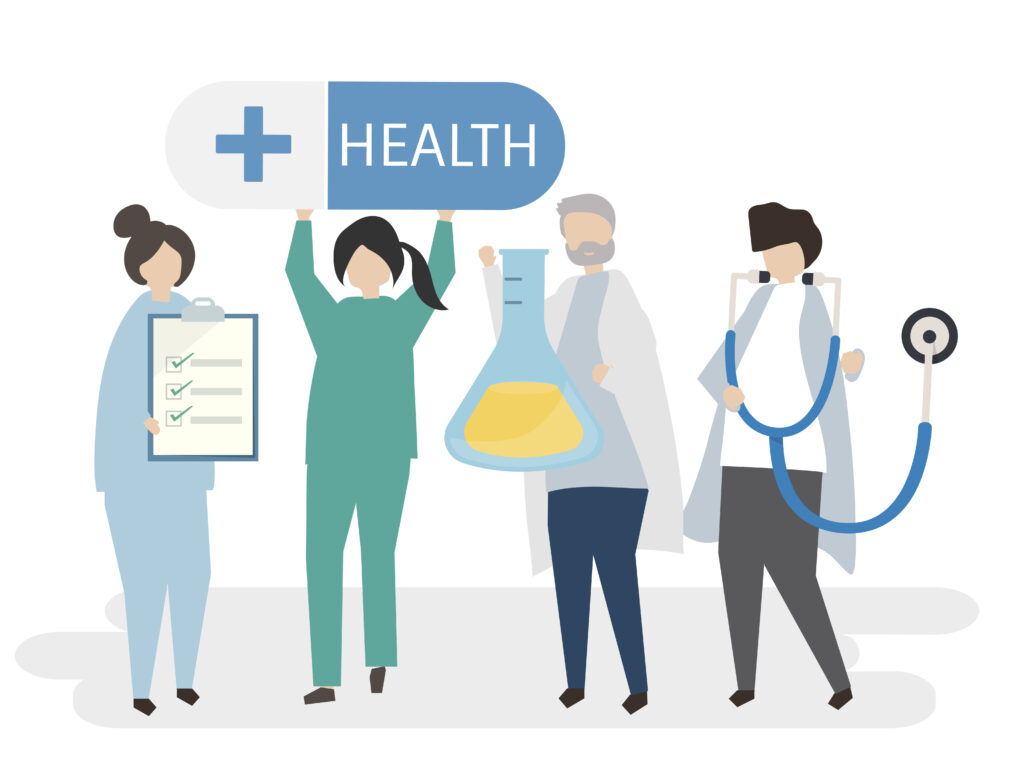Health Economics | Exploring Health Economics: The Interplay of Healthcare, Demographics, and Wellbeing
Introduction
Health economics is a vital field that examines the relationship between health, healthcare, and economic outcomes. It addresses key issues such as healthcare and demographics, the connection between health, wellbeing, and employment, the long-term impact of COVID-19, aversion to inequality in multidimensional wellbeing, and health state valuation through stated preferences. This blog provides an informative overview of these critical topics, highlighting their relevance in today’s healthcare landscape.

Healthcare and Demographics: A Dynamic Relationship
Demographics play a crucial role in shaping healthcare needs and services. As populations age, the demand for healthcare services, particularly chronic disease management and long-term care, increases. The aging population also impacts healthcare costs, as older individuals typically require more medical attention. Additionally, demographic factors such as income, education, and ethnicity influence access to healthcare, with marginalized groups often facing barriers to receiving adequate care.
Health, Wellbeing, and Employment: The Economic Connection
Health and employment are closely linked, with each influencing the other in significant ways. Good health is essential for maintaining employment, as healthier individuals are more productive and have fewer absences from work. Conversely, stable employment contributes to better health outcomes by providing income, healthcare benefits, and a sense of purpose. However, health disparities can lead to inequalities in employment opportunities, particularly for those with chronic illnesses or disabilities.
The Long-Run Impact of COVID-19 on Health Economics
The COVID-19 pandemic has had a profound and lasting impact on health economics. The pandemic exposed vulnerabilities in healthcare systems, disrupted global economies, and exacerbated existing health inequalities. Long-term effects include increased healthcare costs, shifts in healthcare delivery models (such as the rise of telemedicine), and ongoing challenges in managing public health crises. Additionally, the pandemic’s impact on mental health and employment will have lasting implications for economic productivity and wellbeing.
Aversion to Inequality in Multidimensional Wellbeing
Inequality in health and wellbeing extends beyond income disparities to include access to education, social support, and healthcare. Aversion to inequality in multidimensional wellbeing reflects society’s growing concern with addressing these disparities. Policymakers are increasingly focused on creating equitable health outcomes by addressing social determinants of health, such as housing, education, and nutrition. This holistic approach recognizes that health is influenced by a range of factors, not just medical care.
Health State Valuation and Stated Preferences: Measuring What Matters
Health state valuation involves assessing the value individuals place on different health outcomes, often using stated preferences. These preferences are collected through surveys and questionnaires, where individuals are asked to evaluate hypothetical health scenarios. This information is critical for cost-effectiveness analyses, which inform healthcare policy and resource allocation. Understanding how people value different health states helps policymakers prioritize interventions that improve overall quality of life.
Conclusion: The Future of Health Economics
Health economics continues to evolve as it addresses the complex interplay between health, demographics, wellbeing, and economic outcomes. The insights gained from this field are essential for developing policies that promote equitable healthcare access, improve population health, and manage healthcare costs effectively. As we move forward, the lessons learned from the COVID-19 pandemic and ongoing research in health economics will play a crucial role in shaping the future of healthcare.
References
- The World Bank. (2021). “Aging and Healthcare Costs.” Available at: World Bank Aging and Healthcare
- Marmot, M., & Wilkinson, R. G. (2005). “Social Determinants of Health.” Oxford University Press. Available at: Social Determinants of Health
- Cutler, D. M., & Summers, L. H. (2020). “The COVID-19 Pandemic and the $16 Trillion Virus.” JAMA. Available at: JAMA COVID-19 Impact
- Sen, A. (1999). “Development as Freedom.” Oxford University Press. Available at: Development as Freedom
- Dolan, P., & Kahneman, D. (2008). “Interpretations of utility and their implications for the valuation of health.” The Economic Journal, 118(525), 215-234. Available at: Health State Valuation






